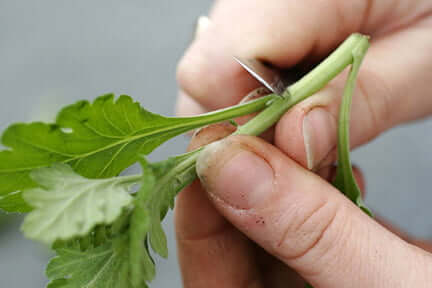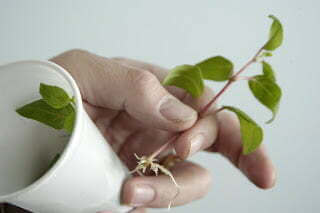The choice of propagating by seed or propagating by cutting depends on why you are propagating as well as
characteristics of the plant to be propagated.
When selecting a propagation method it is important to keep the goal of the propagation in mind,
this can vary from simply growing a new plant to cloning, creating hybrids and carrying desirable genetics.
The following table lists the common advantages and disadvantages of both the seed and cutting propagation methods.
Advantages Of Propagating From Seed:- Seeds are the source used most widely
- New cultivars and varieties can be created through sexual propagation
- It tends to be cheaper to propagate from seed
- The majority of seeds are readily available
- Sexual propagation seldom requires expensive propagation structures
- Large numbers of plants can be produced in minimal space
- Sexual propagation can be used to create rootstocks for budding and grafting
- Sexual propagation promotes genetic variability which helps plants evolve against pathogens and fluctuating environmental conditions
- Manny seeds allow for the possibility to be stored.
- Trees grown from seed tend to live longer, bear more fruit and are hardier.
- Propagating from seed generally carries a lower risk of transferring diseases from the parent plant. (Provided adequate sanitation practices are followed)
- Certain plants can only be raised from seed.

Disadvantages of Propagating From Seed:- Plants propagated from seed risk not being true to type (flowers, growth habit etc. won't be the same as the mother plant) due to cross pollination.
- In some cases Sexual propagation can be slower than asexual.
- Some plants produce non-viable seeds.
- Some seeds are very difficult to germinate.
- The seed of certain plants need require to be treated chemically or mechanically to stimulate germination.
- Certain plants don’t produce seed at all.
- In most cases seedlings have to go through an immature phase before maturing and fruiting.
- Seed collection can be difficult, in some cases hazardous and timing must be right to ensure the seed will be viable.
- Pollination is required to ensure seed is viable.
 | Advantages Of Propagating From Cuttings:- Asexual propagation can be used for plants with low seed production.
- Propagating asexually allows for clones.
- Uniform and true to type offspring can be ensured through asexual propagation.
- Can often be easier and more economically viable.
- Undesirable features such as excessive thorns can be minimized by selecting propagation material from less thorny plant parts. The same method can be used to cultivate desirable qualities such as interesting variegated growth.
- Mature plants are produced more rapidly resulting in faster flower and fruit production.

Disadvantages of Propagating From Cuttings:- This method often requires expensive equipment and structures.
- Certain plants can only be propagated from a specific cutting type, in many cases the plant material required is only obtainable during a specific season or certain time of the year.
- Cuttings require more space than the equivalent in seed.
- Cutting propagation poses the risk of cloning unfavourable genetics. E.g. if the parent plant is susceptible to disease all other clones grown from cuttings will be equally vulnerable.
- Though possible, the storage of cutting material is considerably harder and less effective than storing seeds.
- Smaller plants only allow for a few cuttings to be made per plant.
- Propagating by cuttings tends to be more labour intensive.

|






